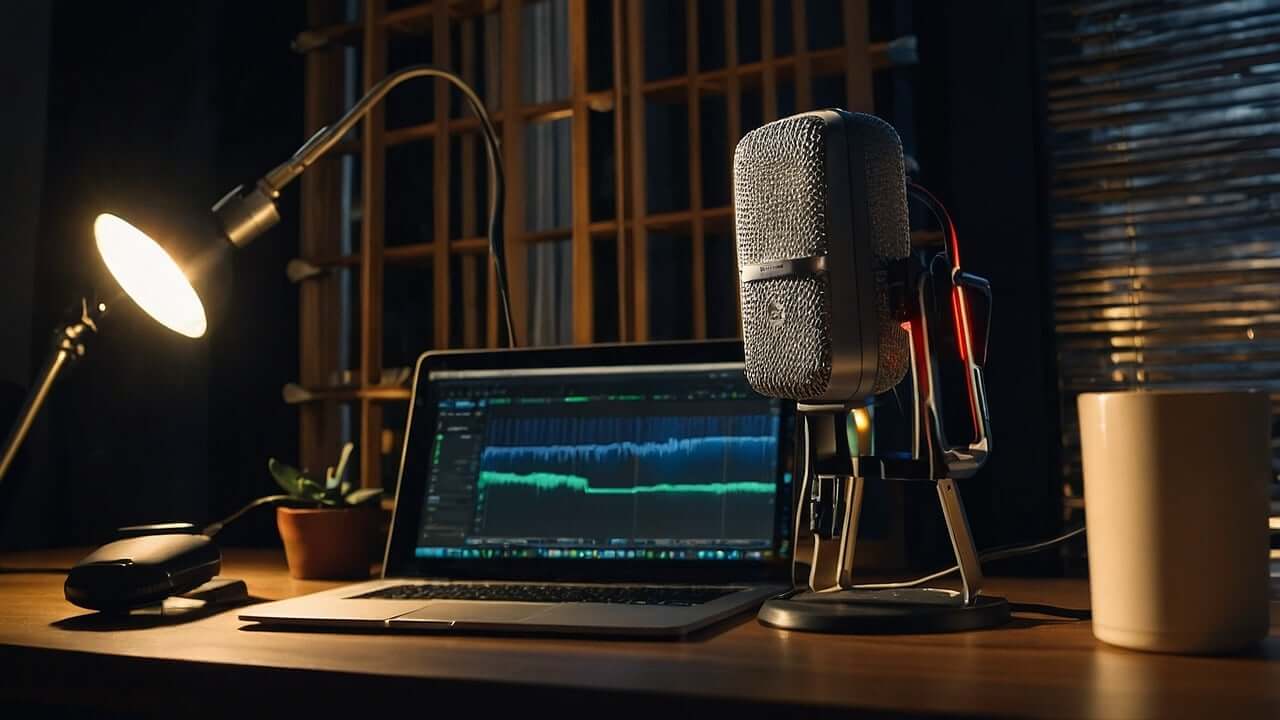Introduction:
Have you ever wondered how technology is reshaping the landscape of art and music? In 2024, the realm of creativity is undergoing a profound transformation, thanks to the integration of artificial intelligence. Join us as we delve into the captivating world of AI art and music, where algorithms collaborate with human creativity to produce stunning works that defy conventional boundaries.
In this exploration, we’ll uncover the symbiotic relationship between art, music, and AI, revealing how algorithms serve as conduits for boundless imagination. Witness firsthand how AI acts as a catalyst for innovation, ushering in a new era of generative art and music that captivates the senses and challenges perceptions.
Embark on this journey with us as we unravel the mysteries of AI-driven creativity and discover the endless possibilities it offers. By the end of this blog post, you’ll understand how AI is reshaping the artistic landscape and be inspired by the limitless potential of human-machine collaboration. Join us as we explore the fascinating intersection of technology and creativity in the realm of AI art and music.
Empowering Human Creativity with AI
Artificial intelligence (AI) is revolutionizing the way we approach creativity, particularly in the realms of art and music. By harnessing the power of generative algorithms, AI empowers individuals to explore new horizons and unlock innovative ideas that may have previously been unattainable.
Generative algorithms serve as the cornerstone of AI-driven creativity, enabling machines to autonomously produce art and music. These algorithms offer fresh perspectives and novel ideas by experimenting with a multitude of possibilities that humans may not have considered. They augment human creativity by expanding the realm of possibilities, allowing artists and musicians to push the boundaries of their imagination.
Moreover, AI facilitates seamless collaboration between humans and machines, amplifying the creative process. Artists and musicians can leverage AI tools to refine their vision, working in tandem with intelligent algorithms to bring their ideas to fruition. This partnership between human intuition and machine intelligence fosters a dynamic exchange of ideas, resulting in remarkable creations.
One of the key advantages of AI in creativity is its ability to streamline tasks, freeing up time for artists and musicians to focus on the creative aspects of their work. AI can handle repetitive tasks such as sketching or music composition, accelerating the creative process and allowing individuals to dedicate more time to refining their ideas. Additionally, AI encourages interdisciplinary collaboration, bringing together artists, musicians, and technologists to explore new avenues of expression by blending art with modern technology.
Overall, AI empowers human creativity by offering new tools, perspectives, and opportunities for exploration. As technology continues to evolve, the possibilities for creative expression with AI are limitless, enabling individuals to push the boundaries of what is possible in AI art and music.
The profound changes brought about by AI in generative art
Generative art, fueled by the transformative power of AI, is reshaping the landscape of creativity in remarkable ways. By leveraging algorithms, this form of art breaks free from conventional constraints, offering a glimpse into a world where machines autonomously produce captivating visual experiences.
The integration of AI into generative art has revolutionized the creative process itself and become AI art. Artists now can delegate tasks to algorithms, allowing for the creation of artwork without constant human intervention. This newfound autonomy liberates artists to explore uncharted territories of expression, unconstrained by traditional techniques or limitations.
Furthermore, AI facilitates a symbiotic relationship between humans and machines in the realm of generative art. Artists can input parameters or rules into algorithms, guiding the creative journey while embracing AI’s unexpected contributions. This collaboration results in artworks that transcend individual capabilities, blending human creativity with the unique insights of artificial intelligence.
Importantly, AI art democratizes creativity by making it more accessible to a wider audience. Unlike traditional art creation, which often demands specialized skills and resources, AI empowers individuals of varying backgrounds to engage in the creative process with relative ease.
Moreover, AI-generated art challenges conventional notions of authorship and originality. In traditional art, the identity of the artist holds significant weight in the interpretation and valuation of artwork. However, in the realm of AI-generated art, the lines blur as algorithms play an active role in the creative process, raising intriguing questions about the nature of artistic expression and ownership.
In essence, AI’s influence on generative art transcends mere innovation; it sparks a revolution in how we perceive, create, and appreciate art in the digital age.
Generative Music: Transforming Soundscapes with Artificial Intelligence
Generative music, powered by artificial intelligence (AI), is revolutionizing how we compose and experience music. Instead of following static patterns, generative music uses algorithms to dynamically craft melodies, resulting in endless variations and unique auditory journeys. With AI art at the helm, generative music systems analyze existing pieces, identifying patterns to either mimic specific styles or invent entirely new ones.
This innovative approach to music composition is reshaping various domains. In the film, generative music systems provide filmmakers with a dynamic tool to craft soundtracks that seamlessly complement the visual narrative. By adapting to scene changes and emotional nuances, AI-generated music enhances the cinematic experience, enveloping viewers in the story’s atmosphere.
Similarly, in video games, generative music offers developers a dynamic solution to adapt soundtracks based on player actions and game progression. This adaptive approach ensures that the music remains immersive, amplifying the player’s engagement with the gaming world.
Moreover, generative music transcends traditional composition methods, offering endless possibilities for creativity and exploration. By leveraging AI, musicians can collaborate with intelligent algorithms to push the boundaries of musical expression, creating compositions that evolve in real time and resonate with listeners on a profound level.
In essence, generative music, empowered by AI, is transforming soundscapes, offering a glimpse into a future where music creation is boundless, dynamic, and endlessly captivating.
Immersive Auditory Experience
Exploring the realm of immersive auditory experiences unveils a fascinating world where music transcends its traditional boundaries. Generative music, driven by artificial intelligence (AI), plays a pivotal role in creating ambient soundscapes that enrich various settings, from relaxation sessions to public spaces.
In ambient music generation, AI-powered systems craft soothing and atmospheric compositions that evolve. These dynamic soundscapes adapt to the environment and the listener’s mood, providing an immersive auditory journey that captivates the senses.
What sets generative music apart is its transformative potential. Unlike traditional composition methods reliant on human creativity, AI-driven systems autonomously generate music tailored to specific contexts and purposes. This ability to continually adapt and evolve ensures that the auditory experience remains fresh and engaging.
Looking ahead, the future of generative music is brimming with possibilities. As technology advances, so will AI-powered systems’ capabilities, offering increasingly innovative and personalized musical experiences. With AI leading the way, generative music stands poised at the forefront of a new era in music composition, where creativity knows no bounds and every listener can embark on a unique auditory adventure.
Collaboration and Partnership
In the world of music, AI algorithms join forces with composers to weave intricate symphonies that resonate with haunting beauty. Through this fusion of melody and machine, compositions emerge that stir profound emotions and reach into the depths of the soul. Similarly, in the visual arts, AI-powered tools collaborate with painters and designers to create landscapes that blur the lines between reality and imagination. The resulting blend of organic forms and digital precision captivates audiences and challenges traditional notions of artistic authenticity.
This collaborative spirit fosters a sense of renewal, marked by innovation and inclusivity. Rather than overshadowing human creativity, AI amplifies its impact, making artistic expression more accessible and nurturing a culture of co-creation. Through shared exploration and mutual respect, artists and AI forge ahead, exploring new realms of imagination and invention with AI art.
Transforming Creativity
Despite the challenges, integrating AI into creative fields offers undeniable benefits. AI algorithms can enhance human creativity by providing inspiration, assistance, and fresh perspectives to artists and musicians. With AI tools, creators can overcome creative blocks, experiment with innovative techniques, and produce work that pushes the boundaries of what’s possible.
Looking forward, as technology advances, the relationship between AI and human creativity will continue to evolve. Progress in AI capabilities, along with developments in machine learning and neural networks, will unlock new avenues for artistic expression and discovery. Moreover, the widespread availability of AI technologies will democratize access to creative processes, allowing people from diverse backgrounds to engage with and contribute to the arts on a global scale.
While challenges and ethical considerations remain, integrating AI into creative practices presents an opportunity for innovation and artistic exploration. By embracing AI-powered generative art and music, we can shape a future where technology and human creativity intersect to enrich our cultural landscape. As we navigate this evolving relationship, it’s crucial to remain vigilant, ensuring that AI is used responsibly and ethically for the betterment of society as a whole.
Conclusion: Exploring AI Art and Music in 2024
In conclusion, the integration of artificial intelligence (AI) into creative fields represents a paradigm shift in how we approach and engage with art and music. Despite the challenges and ethical considerations, the potential benefits of AI in fostering creativity and innovation are undeniable. By providing inspiration, assistance, and fresh perspectives, AI algorithms empower artists and musicians to push the boundaries of their craft, creating works that resonate with audiences on a profound level.
Looking ahead, as technology continues to evolve, the relationship between AI art and human creativity will evolve in tandem, unlocking new avenues for artistic expression and discovery. The democratization of AI technologies will further broaden access to creative processes, fostering a more inclusive and diverse cultural landscape.
Ultimately, the synergy between AI and human creativity heralds a future filled with boundless possibilities, where technology enhances, rather than replaces, the creative spirit. By embracing AI-powered generative art and music responsibly, we can shape a future where creativity knows no bounds and where the arts continue to thrive and inspire generations to come.

